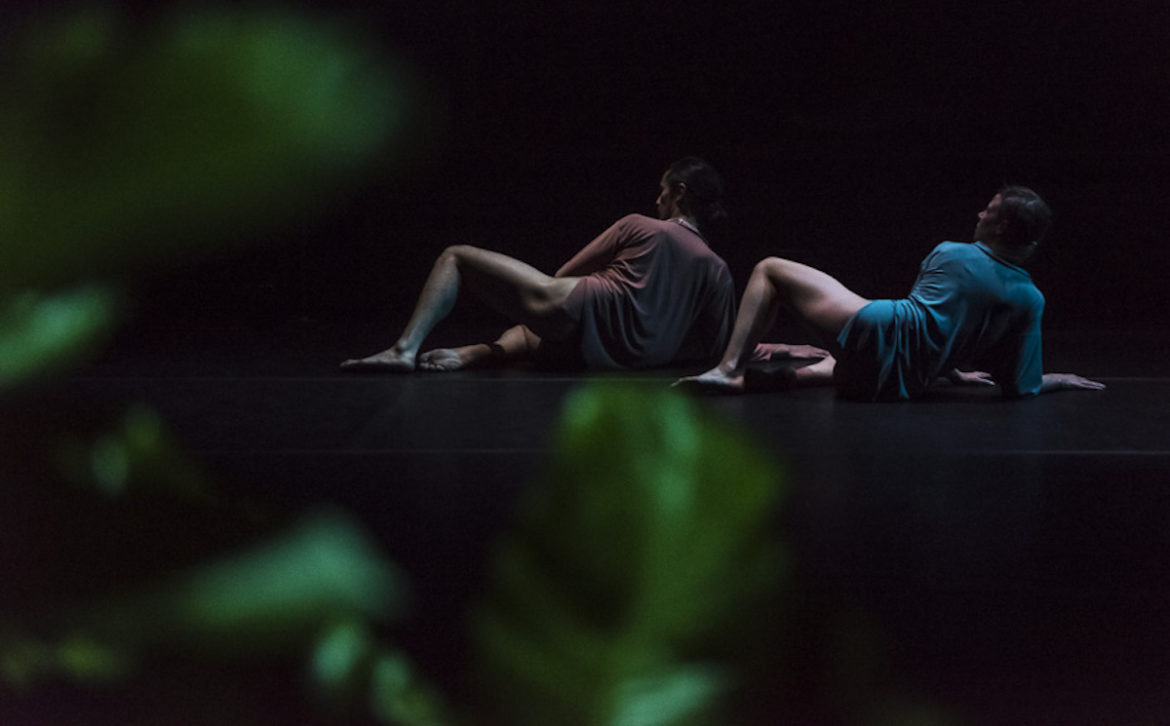Text, dance and interpretation: Alison Croggon on Rhiannon Newton’s We Make Each Other Up
I interpret the world primarily through words, while at the same time being uneasily aware of their limitations. Words are peculiar things, after all: symbolic approximations for experience and thought that only approach precision through various trickeries: playing with context, syntax and rhythms in written language, for example, or inflecting meaning with gestures or tones when we speak.
Words too easily enclose and legislate, mislead and conceal. Sometimes it seems to me that the entire struggle of poetry is the fight against the tyrannic tendencies of language. Often I turn to dance as a relief from words, finding a kind of liberation in its insistence on the articulate communication of the human body.
But of course, a lot contemporary dance incorporates spoken text into its performance. I’ve seen very successful incorporations, but it can be a problem, providing explication where none is needed, or enclosing or even erasing the possible meanings of the dance. When it’s successful, the text becomes a tactful aspect of the dance, its sensuous properties foregrounded and integrated into its bodies of meaning.
Rhiannon Newton’s We Make Each Other Up, the result of a residency at Dancehouse, is full of texts, but it begins with the sound of a plant. Megan Alice Clune is forestage throughout the performance, seated crosslegged in front of a huge uprooted plant which is wired to her computer and provides the abstract sound – a roughened, electronic breath – that underpin a lot of the movement. Clune overlays these sounds with electronic keyboard which sounds very like a meditation program.
It begins with a body appearing in the distance, lit wraithlike in the darkness. She is off-centre, somehow imbalanced, a tentative presence. Gradually, sinuously, she moves towards us, before sitting down and intoning the first of the texts in a deliberately expressionless voice.
What begins as a solo gradually acquires other bodies which seem to unwind out of the darkness, until there are four dancers on stage (Rhiannan Newton, David Huggins, Amaara Raheem and Ivey Wawn). The first of these reveals, thanks to Siobhain Geaney’s gorgeous lighting, is superb: a body is suddenly apparent, prone in the half light, as if she appeared from nowhere.
The four bodies pair off, divide into singular movements and come together with slow movements that suggest Marvell’s “vegetable love” (indirectly referenced through Ursula Le Guin’s short story, Vaster than Empire and More Slow, which is quoted in the dance). They suggest vine tendrils slowly creeping across the floor, or open their half naked bodies as if they are flowers, the movements complex and organic. The entire motion of the dance is across the Dancehouse space towards the audience, and finishes when the dancers end up on the rostrum.
The performance is punctuated with a collage of quotations from an eclectic range of sources, among them Virginia Woolf’s Orlando, Roland Barthe’s A Lover’s Discourse, Lui Cixin’s Death’s End, the final book of his science fiction trilogy Remembrance of Earth’s Past and Han Kang’s The Vegetarian. They are gorgeous pieces of writing. But maybe that was part of my problem.
The text directed my perceptions of the dance and ended up dominating my experience of the work in ways that were ultimately distracting. This wasn’t helped by the unvarying score, which focused my auditory attention onto the words.
It’s effectively a collage of texts, and collage is a process that violently abstracts a work or image from its original context to create a new thing. Each text revolves around themes of nature, culture and eroticism, the recognition of our own place as natural organisms. The opening passage is from Woolf (I think) discussing how nature in literature is a wholly different thing from nature itself. This led me to a long musing about what, on this stage, was literature, and what was nature. The plant, obviously…but were the dancing bodies nature? But dance, like literature, is a human construction…
Aside from their vague thematic connections, I couldn’t really make sense of the thought that connected the texts, each of which comes with its own context. I felt that an essential intellectual scaffolding were missing; the the roots of the texts were trailing, interrupting or contradicting each other. In a conversation afterwards, my interlocutor suggested that I was listening too hard, instead of entering the suspended meditative state that the rest of the dance produced. But if those texts were present merely as decoration, why have them at all?
I found myself increasingly disturbed by the naked roots of the plant, violently abstracted, like the texts, from its place. Was I listening to a plant in torment? (Do plants feel pain?) Is it that human beings can’t be anything but violent in their cultural relationships to nature? (Which is a fair observation). Yet the dance seemed to be an exhortation towards some kind of ecstatic or erotic unity with the natural world.
We Make Each Other Up left me feeling very ambivalent: somehow the texts operated as if they were fetishised objects, substitutes for meaning rather than conduits for it. But much of the dance was beautiful. Perhaps those words should have remained subtextual, unspoken ideas informing the performance and permitting the dance its own freedom.
We Make Each Other Up, choreographed and performed by Rhiannon Newton. Lighting design by Siobhain Geaney, costume design by Honey Long. Collaborators and performers: David Huggins, Amaara Raheem, Ivey Wawn and Megan Alice Clune. Sound design and composition by Megan Alice Clune. Collaborator and additional writing by Aodhan Madden. Dancehouse. Closed.

